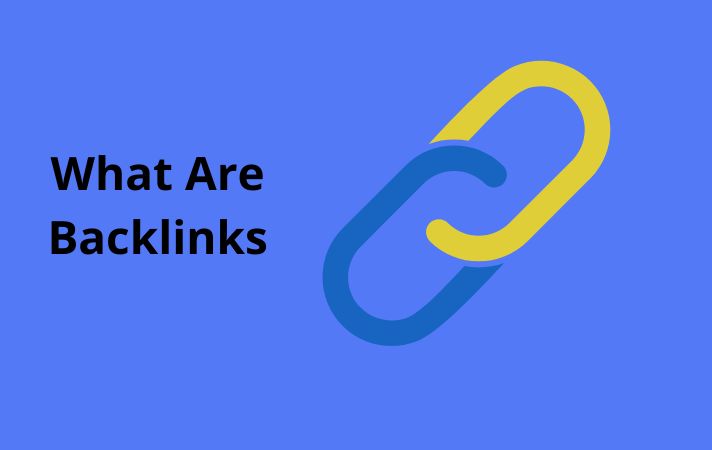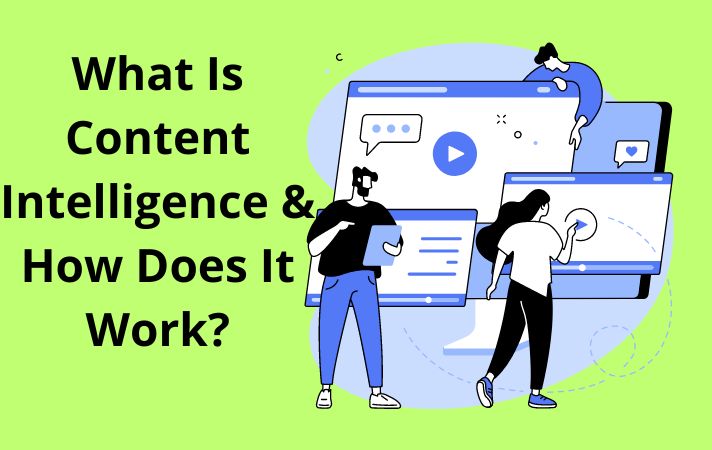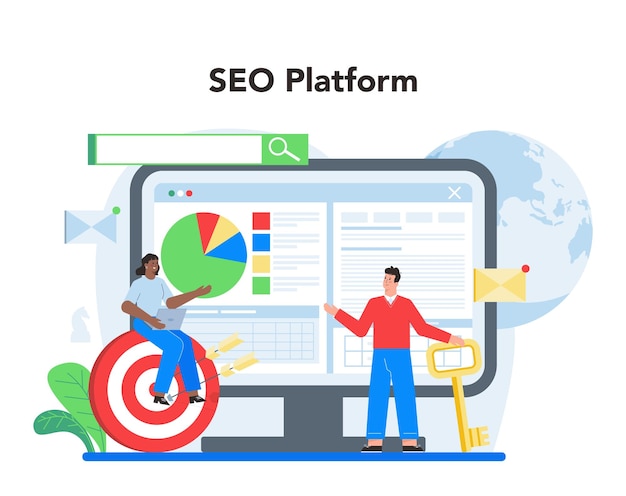What Are Backlinks & Why They Matter for SEO
The article starts by defining backlinks as links that point from one website to another and explaining how they are important for search engine optimization. It then covers the different types of backlinks, including do-follow and no-follow links, and how they can affect a website’s rankings in search engine results pages.
The article also provides an overview of link building strategies, including guest posting, broken link building, and resource link building, and explains how to evaluate the quality of a backlink. It also touches on the potential risks of link building and how to avoid them.
Throughout the article, there are tips and best practices for effective link building, such as focusing on quality over quantity and building relationships with other website owners. The article concludes by emphasizing the importance of continuously monitoring and updating backlink strategies to stay ahead in the ever-changing landscape of search engine optimization.
Why Are Backlinks Important for SEO?
Backlinks are an important factor in search engine optimization (SEO). They are links that point to your website from other websites, and they signal to search engines that your site is reputable and trustworthy. In this article, we’ll explore why backlinks are so important for SEO and how they can help you improve your website’s ranking in search engine results pages (SERPs).
Backlinks improve your website’s authority
One of the main ways search engines determine the authority of a website is by analyzing the quality and quantity of its backlinks. When other high-quality websites link to your site, search engines see this as a vote of confidence in your content. As a result, your website’s authority increases, which can improve its ranking in search results.
Backlinks can increase your website’s visibility
When your website has backlinks from high-quality, relevant websites, it can also increase your visibility and reach to your target audience. When people click on these links, they are directed to your website, and you can potentially gain new visitors, customers, and followers.
Backlinks can drive traffic to your website
When a website links to your site, it provides a direct pathway for people to find your content. This can drive more traffic to your website and improve your chances of converting visitors into customers. Backlinks can also increase your referral traffic, which is the traffic that comes from other websites and social media platforms.
Backlinks can help you establish your website as an authority in your niche
When your website has backlinks from other reputable websites in your niche, it can help you establish your website as an authority in your field. This can help you attract more visitors, build a loyal following, and become a trusted source of information in your industry.
Backlinks can improve your website’s crawlability
Search engines use bots called “spiders” to crawl the web and index websites. When these spiders encounter links to your site on other websites, they follow those links to your site, which can help improve your website’s crawlability. This means your site will be more easily found and indexed by search engines, which can improve your chances of ranking in search results.
In conclusion, backlinks are a critical component of SEO. They can improve your website’s authority, visibility, traffic, and crawlability, and help you establish your website as an authority in your niche. To build a strong backlink profile, focus on creating high-quality content that other websites will want to link to, and engage in ethical link-building practices that comply with search engine guidelines. By doing so, you can improve your website’s ranking in search results and achieve greater success online.
Types of Backlinks
Backlinks are an important component of search engine optimization (SEO). They are links that point to your website from other websites, and they signal to search engines that your site is reputable and trustworthy. However, not all backlinks are created equal. In this article, we’ll explore the different types of backlinks and how they can impact your website’s SEO.
Do-follow backlinks
Do-follow backlinks are links that pass “link juice” from one website to another. They are the most valuable type of backlink because they signal to search engines that your website is authoritative and trustworthy. When other high-quality websites link to your site using a do-follow link, it can improve your website’s ranking in search engine results pages (SERPs).
No-follow backlinks
No-follow backlinks are links that include a “rel=”nofollow” attribute. This tells search engines not to follow the link or pass any link juice to your website. While no-follow links don’t provide as much SEO value as do-follow links, they can still be beneficial for driving traffic to your website and building brand awareness.
Internal backlinks
Internal backlinks are links that point to other pages on your own website. These links can help search engines understand the structure of your website and the relationships between your pages. Internal links can also help visitors navigate your website and find the information they’re looking for.
External backlinks
External backlinks are links that point from other websites to your website. These links are the most valuable type of backlink because they provide an endorsement from another website, which can signal to search engines that your site is trustworthy and authoritative. External backlinks can also help drive traffic to your website and increase your visibility in search results.
Natural backlinks
Natural backlinks are links that are earned naturally through the quality of your content and the relevance of your website. They are considered the most valuable type of backlink because they are a true endorsement of your website. Natural backlinks can also help you establish your website as an authority in your niche.
Manual backlinks
Manual backlinks are links that are created through deliberate link-building efforts. While manual backlinks can be a valuable way to build your backlink profile, it’s important to engage in ethical link-building practices that comply with search engine guidelines. This means avoiding spammy tactics like buying links or using link farms.
In conclusion, the different types of backlinks have varying degrees of impact on your website’s SEO. Do-follow backlinks are the most valuable type of backlink, while no-follow links can still be beneficial for driving traffic and building brand awareness. Internal and external backlinks can help search engines understand the structure and relationships of your website, while natural backlinks are the most valuable type of endorsement. Manual backlinks can be a valuable way to build your backlink profile, but it’s important to use ethical link-building practices. By focusing on creating high-quality content and engaging in ethical link-building practices, you can build a strong backlink profile that improves your website’s ranking in search results.
How to Check Any Website’s Backlinks
Backlinks are a crucial part of search engine optimization (SEO) and can help improve your website’s ranking in search results. By understanding the backlink profile of any website, you can gain insights into their SEO strategy and identify opportunities to improve your own website’s backlink profile. In this article, we’ll explore how to check any website’s backlinks using a variety of tools and techniques.
Google Search Console
Google Search Console is a free tool that allows you to monitor and manage your website’s presence in Google search results. One of the features of Search Console is the ability to see which websites are linking to your site. To access this information, log in to your Google Search Console account, click on “Links” in the left-hand menu, and then click on “External Links.” From there, you can see a list of all the websites that are linking to your site.
Ahrefs
Ahrefs is a paid tool that provides comprehensive backlink analysis for any website. To check a website’s backlinks using Ahrefs, simply enter the URL of the website in the search bar and click “Search.” You’ll be taken to a dashboard that shows the number of backlinks, referring domains, and other metrics. You can also see a list of the specific websites that are linking to the site, as well as the anchor text and the URL of the page that the link is pointing to.
Moz
Moz is another paid tool that provides backlink analysis for any website. To check a website’s backlinks using Moz, enter the URL of the website in the search bar and click “Search.” You’ll be taken to a dashboard that shows the website’s Domain Authority, as well as the number of linking domains and the total number of backlinks. You can also see a list of the specific websites that are linking to the site, as well as the anchor text and the URL of the page that the link is pointing to.
SEMrush
SEMrush is a paid tool that provides backlink analysis as well as other SEO metrics for any website. To check a website’s backlinks using SEMrush, enter the URL of the website in the search bar and click “Search.” You’ll be taken to a dashboard that shows the website’s Domain Authority, as well as the number of referring domains and the total number of backlinks. You can also see a list of the specific websites that are linking to the site, as well as the anchor text and the URL of the page that the link is pointing to.
Google search operator
Another way to check a website’s backlinks is to use a Google search operator. Simply enter “link:website.com” (replacing “website.com” with the URL of the website you want to check) into the Google search bar. This will show you a list of all the websites that are linking to the site.
In conclusion, checking the backlink profile of any website is a critical component of SEO research. By using a combination of tools and techniques, you can gain insights into the backlink strategy of any website and identify opportunities to improve your own website’s backlink profile. By focusing on building high-quality, relevant backlinks and avoiding spammy tactics, you can improve your website’s ranking in search results and drive more traffic to your site.
How to Get Backlinks to Your Site
Backlinks are an important part of any successful SEO strategy. By getting other websites to link back to your site, you can improve your search engine rankings and drive more traffic to your website. In this article, we’ll explore some effective strategies for getting backlinks to your site.
Create High-Quality Content
One of the most effective ways to get backlinks to your site is by creating high-quality content that others will want to link to. This could include blog posts, infographics, videos, and other types of content that are relevant to your industry and provide value to your audience. When you create great content, others will be more likely to link back to it from their own websites.
Guest Blogging
Guest blogging is another effective strategy for getting backlinks to your site. By writing guest posts for other blogs in your industry, you can include a link back to your own website in your author bio or within the content of the post. This can help drive more traffic to your site and improve your search engine rankings.
Reach Out to Other Websites
Another effective strategy for getting backlinks to your site is to reach out to other website owners and bloggers in your industry. You can introduce yourself, share your content, and ask if they would be willing to link back to your site. This can be a great way to build relationships with others in your industry and get more exposure for your content.
Use Social Media
Social media can be a powerful tool for getting backlinks to your site. By sharing your content on social media and engaging with others in your industry, you can attract more attention to your site and encourage others to link back to it. You can also participate in relevant social media groups and discussions to get more exposure for your content and build relationships with others in your industry.
Participate in Online Communities
Participating in online communities, such as forums and discussion boards, can also be a great way to get backlinks to your site. By sharing your knowledge and expertise and providing helpful answers to others’ questions, you can establish yourself as an authority in your industry and attract more attention to your website. You can also include a link to your site in your forum signature or within your posts, as long as it is relevant and adds value to the discussion.
In conclusion, getting backlinks to your site is an important part of any successful SEO strategy. By creating high-quality content, guest blogging, reaching out to other websites, using social media, and participating in online communities, you can attract more attention to your site and improve your search engine rankings. With a consistent and strategic approach, you can build a strong backlink profile that helps drive more traffic to your website and improves your overall online presence.









